LONDON — The first U.S. Navy ship sunk by the enemy in World War I has finally been found, ending 105-year mystery. A team of experienced deep divers were able to locate the missing USS Jacob Jones on August 11, about 40 miles off the coast of the Isles of Scilly in the United Kingdom.
The USS Jacob Jones was one of six vessels called “Tucker-class” destroyers, designed by and built for the Navy before the nation entered World War I. The impressive ship was the first of the American destroyers ever to be sunk by enemy action. It was torpedoed off the Isles of Scilly in 1917 by a German submarine.
With 150 onboard, 66 men met their fateful end on December 6, 1917.
Dominic Robinson from the team of UK “Darkstar” divers, notes the importance of the discovery mainly for its historical significance. “This is such an exciting find – Jacob Jones was the first ship of its kind to be lost to enemy action,” the 52-year-old tells South West News Service. “The ship, lost for over 100 years, has been on a lot of people’s wish lists because of its historical weight. It has a particular interest in America given the amount they spent on designing the destroyers.”
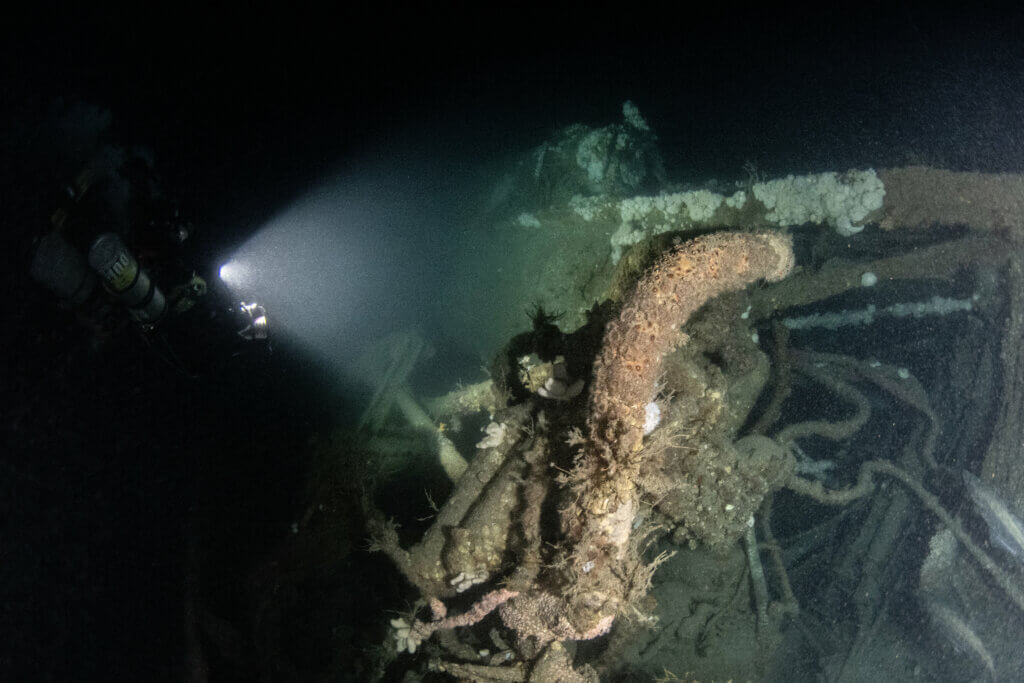
Once the U.S. entered World War I in April 1917, the USS Jacob Jones was sent overseas. Upon its return to Ireland, the vessel was traveling around 40 miles away from the Isles of Scilly until she was spotted by the German submarine.
Robinson and his team at Darkstar have a long history of deep diving exploration. They have identified wrecks from all over the UK, including the HMS Jason in Scotland and HMS B1 Submarine.
“One of the most interesting things about this vessel was the remarkable stories that came with its sinking. The destroyer’s commander ordered all life rafts and boats launched, but as the ship was sinking the armed depth charges began to explode – which is what killed most of the men who had been unable to escape the ship initially,” adds the diver from Plymouth, Devon in England. “A few of the crew and officers also tried to get men out of the water and into the life rafts. One name in particular was Stanton F. Kalk, who spent his time swimming between the rafts in the freezing Atlantic water. But he ended up dying of cold and exhaustion – he was awarded the Navy’s Distinguished Service Medal for his heroic actions that day.
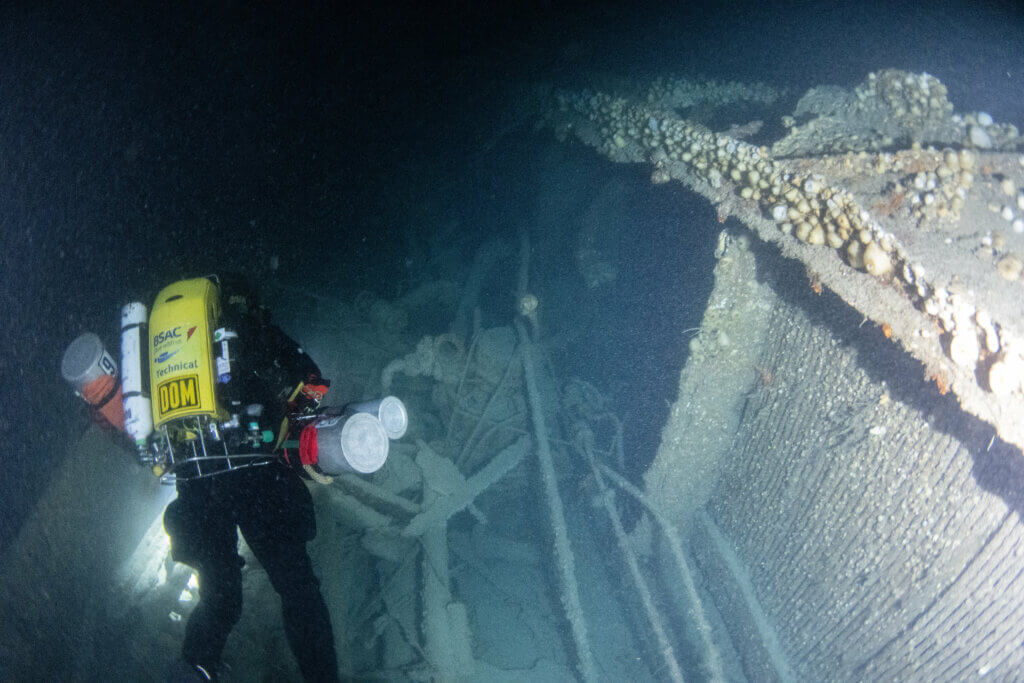
“The German submarine commander, Captain Hans Rose, showed an incredible act of kindness – he actually saw all the Jacob Jones men in the water and took two badly injured crewmen aboard his own submarine,” he continues. “He then radioed his enemies at the US base in Queenstown with their coordinates to come and rescue the survivors.”
Jacob Jones sank in eight minutes without issuing a distress call.
Dominic, who has been completing deep sea divers for over 30 years, explained how he and his fellow Darkstar divers were able to identify the vessel.
“We had already decided we were going to look for the vessel, but because of its depth and remoteness it is very difficult to get to. So we spent this week going to different GPS locations – provided by the UK hydrographic office – who have information on the location of shipwrecks upon the seabed, but do not know which ones they are,” he says. “We found the vessel on our second day of diving to other wrecks in the area, but there had been many hours of research beforehand. On the day, five of us went into the water, and the ship was about 115 meters to the seabed and 110 meters to the top of the wreck. It was very clear that it was Jacob Jones immediately – you can see its name written on parts of the shipwreck.
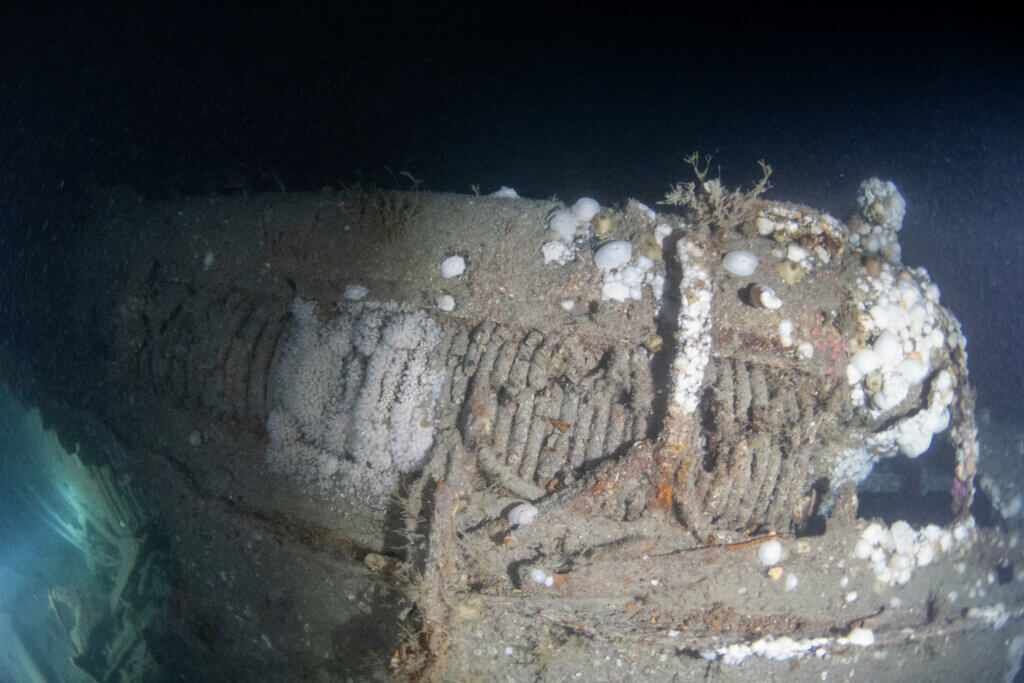
“This was a steam ship which contained big boilers and very big engines to get it to travel at such a speed. War ships look very different to cargo ships underwater – we could actually see the guns, torpedo tubes and one of the prop shafts that was bent 390 degrees – which would have happened either when the vessel exploded or when it hit the sea bed,” he continues. “No human remains were found or personal artifacts. But for me, the thing that brought it home was the bent prop shaft – which shows the trauma the vessel must have been through when it was torpedoed. Absolutely incredible.”
The vessel, which measured at 315 feet long and just over 30 feet wide, was armed with eight 21-inch torpedo tubes and four four-inch guns. She was powered by a pair of steam turbines which were able to propel the vessel to a speed of up to 30 knots (34.5 miles per hour).
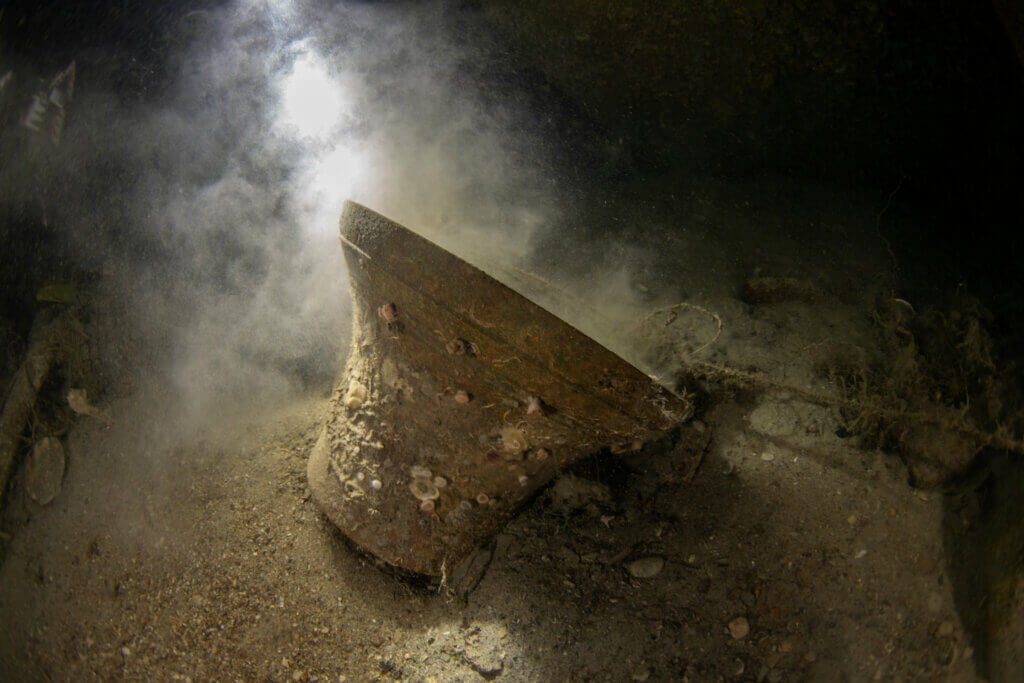
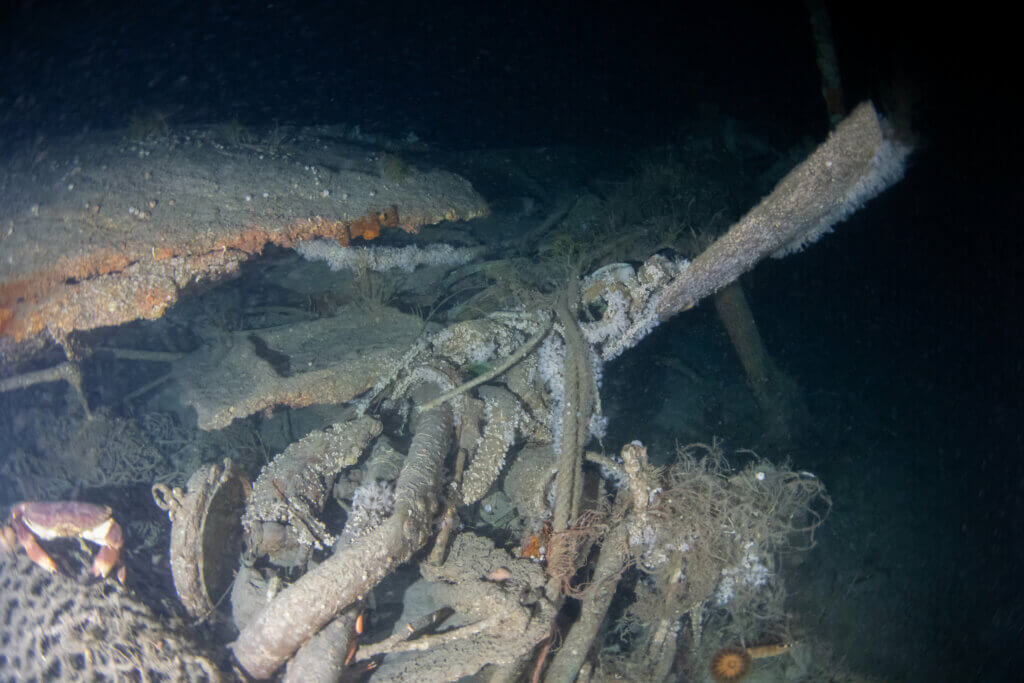
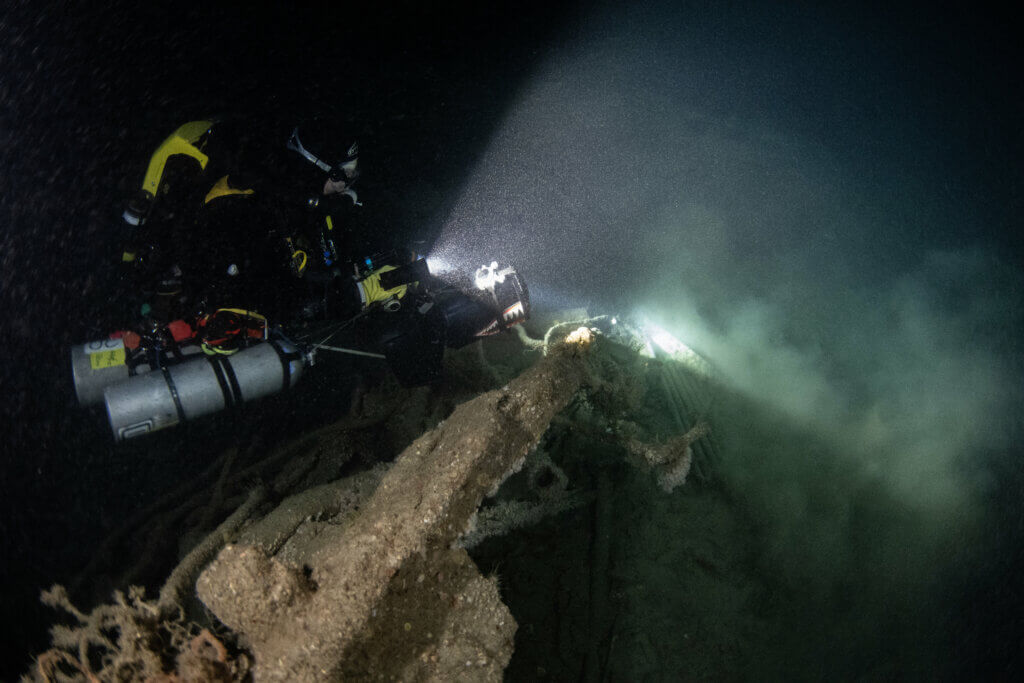
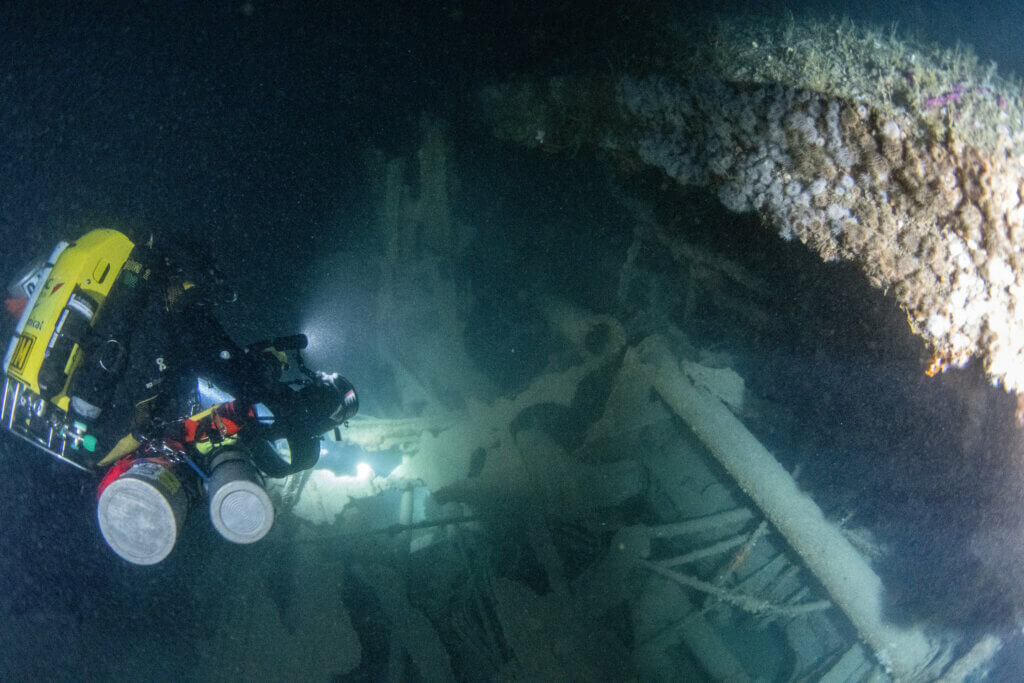
Report by South West News Service writer Lauren Beavis
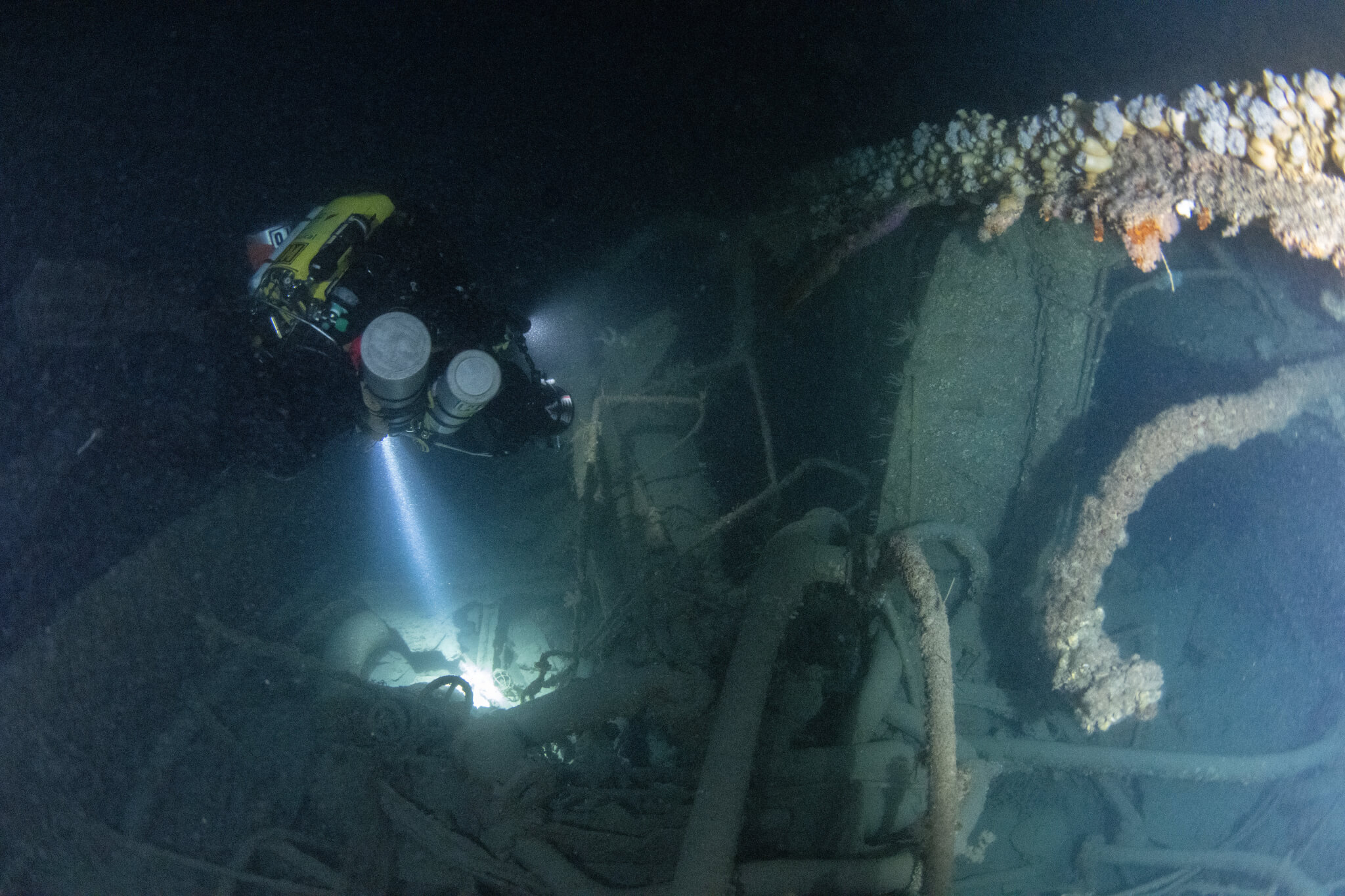
It’s a remarkable story and one worth reading. To find the ships Bell it should
be raised and put in the Naval History Center along with those lost to the sea.
I’m grateful for stories like this even though its tragic end and loss of men.
–
I served during Nam – 12 years on four different ships. Each ship has its own
personal meaning to men at sea. Though all our gone now its remarkable
men like this diver – who is appreciated and we are greatfully for his findings
to put into our history of lost vessel’s and men – during War time’s.
–
Boats